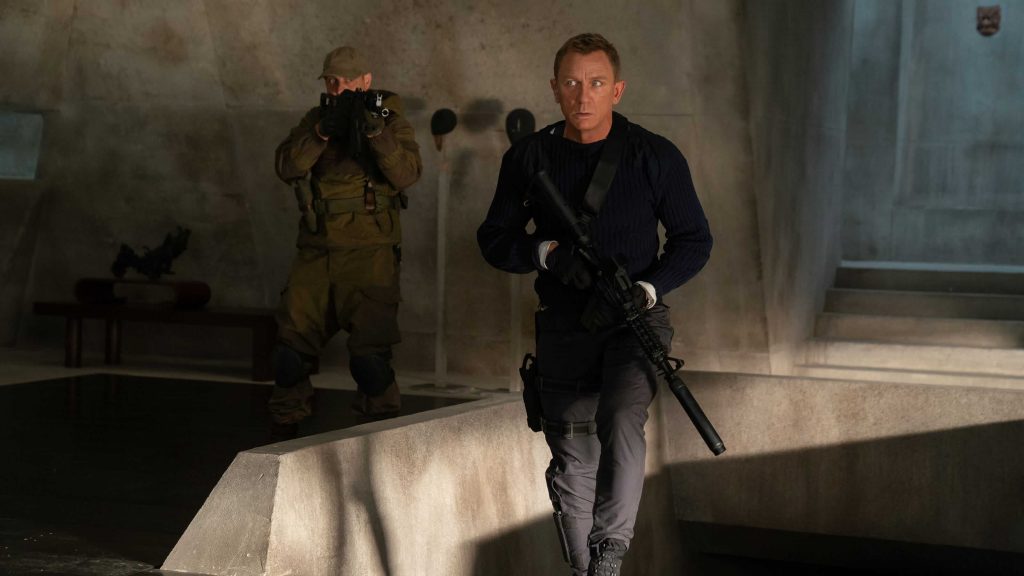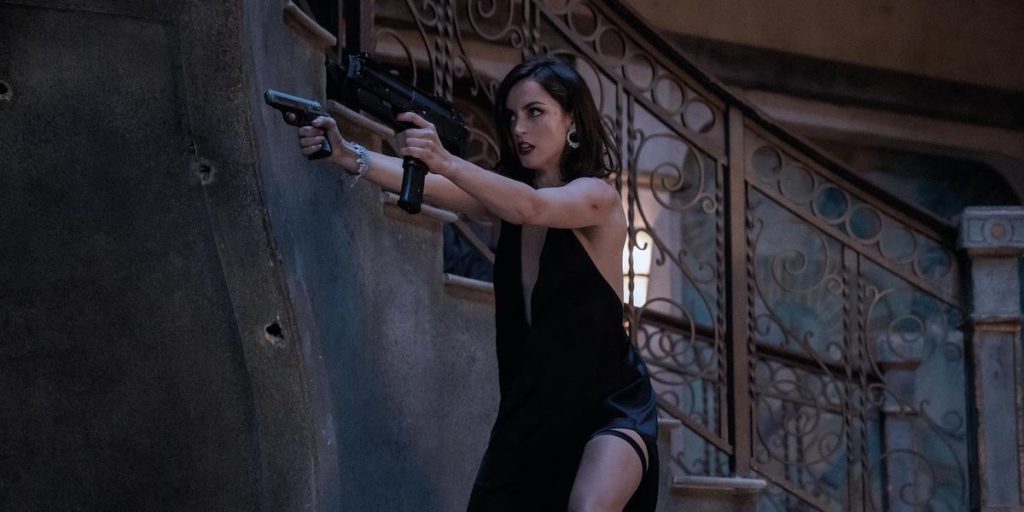“I’m going to tell you a story. It’s about a man called Bond. James Bond”.
After an 18 month delay due to some sort of pandemic, Bond has finally returned to the big screen and I’m pleased to report that Bond’s 25th outing – the Cary Joji Fukunaga helmed No Time To Die gives Daniel Craig’s 007 an almost pitch perfect send off.
A Bond film is always an occasion; something bigger than cinema, arguably more so than any other film franchise. The build up starts months, if not years, before its actual release – Who’s singing the theme song? Who’s directing? Who’s actually playing Ian Fleming’s James Bond 007? No Time To Die has the added pressure of being Mr. Craig’s last time donning Bond’s Tom Ford tailored suits. Craig’s tenure as Bond has given us some exceptional entries in the 5 decades old franchise; kicked off by a safe Casino Royale and bolstered by Skyfall, my personal favourite Bond of all time. Now, No Time To Die can can add itself to the list of the best Bond films.
No Time To Die was shaped into a wonderfully satisfying ending to Daniel Craig’s journey by long time writers Neal Purvis and Robert Wade, on this occasion joined by Cary Fukunaga and Britain’s darling Phoebe Waller-Bridge, adding her much needed ferocious wit and natural dialogue. Much of No Time To Die’s narrative success can be attributed to the rest of Craig’s outings – since 2006’s Casino Royale we’ve been privy to a more nuanced Bond, a character trying to escape his two dimensional persona into a more delicately crafted protagonist. And indeed all the players, bar Rami Malik’s Lyutsifer Safin, have jumped back into the fray for Bond 25. This arc has allowed us to grow closer to Bond, and in a strange way, relate to him. But at the very least the audience now has new emotional investment in the adventures of 007; something we didn’t feel from the Bond’s of yesteryear.
Disregarding the slight hiccup that was Quantum Of Solace, Craig’s portrayal of Bond was always about the journey, the relationships, and Bond’s own mysterious past. Luckily, No Time To Die doesn’t forget this and gives Bond breathing space to end his journey properly. If Craig’s era of James Bond was a standalone series of films (which I suppose they are), they’re masterfully done. What started with the exciting Casino Royale ends with a sombre and sincere send off to 007.

Bond 25’s narrative prowess comes with a caveat: No Time To Die’s strongest asset is also its weakest. While we join our old mate James on his last mission as a Double-0 in an ultimately gratifying story, other aspects aren’t as well executed. Disappointingly, Malik’s villain Safin didn’t feel particularly well fleshed out, instead reduced to just a vessel employed to carry the film from act to act. I hazard to say he could have been omitted from the story. Perhaps Christolph Waltz’ Blofield could have played a more prominent role, and they could have foregone a new villain entirely. This would have made sense for those familiar with Ian Fleming’s You Only Live Twice (the novel). No Time To Die does in fact pay homage to a number of story beats and events from Bond’s past, in both the literary and film worlds, including You Only Live Twice. The film also heavily references a certain George Lazenby Bond film – one of my least favourite – but did so in such a sincere manner that I found myself feeling nostalgic. But still, the lack of development of certain characters, and the unceremonious departure of others, regrettably detracted from the film overall. It’s a shame because the majority of characters who made an appearance we’re already familiar with, which should have given space for new ones to develop. Oh, and just because I have the biggest soft spot possible for the flawless Ana De Armas, I have to say she was grossly underused, but played her character perfectly whenever she did grace the screen.
I found my heart aching for Bond, willing him to be able to just retire and have a normal life, to be able to experience love and contentment without knowing it’ll all be ripped away from him sooner or later.
This is made more disappointing when looking at the writing pedigree of those involved (Cary also worked closely with Purvis and Wade in creating the story). Having said that, No Time To Die did a fantastic job at closing this chapter of Bond films, especially given the palpable sense of expectation. This is by far the most human and most thought out Bond story. I found my heart aching for him, willing him to be able to just retire and have a normal life, to be able to experience love and contentment without knowing it’ll all be ripped away from him sooner or later. I can extend this notion to his companions too, but alas, this is not a happy tale. But it shouldn’t be. That isn’t life. And Craig’s 007 is the franchises’ strongest [and only?], least ham-fisted attempt at grounding Bond in real life. Admittedly not all of us can say we’re Commanders of the Royal Navy, and MI6 Intelligence Officers, but we can relate in some way to a lot of the emotions Bond goes through in this film.
Martin Campbell brought his experience and knowledge of the Bond Universe in 2006’s Casino Royale, having previously directed Goldeneye – Casino was fast paced, and filled with visceral action. Sam Mendes and Cinematographer supremo Roger Deakins brought a masterful level of polish to the series, framing the entirety of Skyfall with haunting and beautiful imagery. This time round directing responsibilities fell to Cary Joji Fukunaga of True Detective fame, and his input is no less noticeable. His eye for creating set-pieces gave No Time To Die a unique look not seen in any other Bond. Not as bombastic as other entries, but wholly engrossing and more personal. No Time To Die is full of clean, and perfectly paced build ups to pivotal moments. With wide shots galore, Fukunaga makes viewing No Time To Die an absolute pleasure on the big screen, while choosing to frame slower moments with straight-on close/mediums gives a sense of intimacy to proceedings – important to the story he’s trying to tell in No Time To Die, again something I can’t recall feeling in other entries.

No Time To Die is the perfect ending to Daniel Craig’s time as James Bond but is not quite the perfect film. A weak antagonist and a handful of unsatisfying moments let it down a great deal. But the overall narrative and writing allows its downfalls to not be detrimental to the film as a whole. There are sweet moments where Bond is more playful and natural, and human moments where Bond sheds his armour and gives us opportunities to relate. The writing in No Time To Die is superb, 007 is more naturalistic and grounded, and discourse among characters flows well.
There’s almost a sense of impending destiny throughout. You definitely don’t forget this is Craig’s last outing, and neither do the characters. There’s a point during the film where you start to feel like you know where it’s all heading, and you have to start preparing yourself. I never thought I’d tear up at a Bond film, but here I am.
James Bond will return, but Daniel Craig’s portrayal of 007 has become my favourite. A fitting and sincere close to a more modern and nuanced Bond. No Time To Die did not let down a series of films full of unforgettable moments and franchise firsts. It did its due diligence in paying homage to its history but also brought something new to the table. One of the best Bond films ever made and definitely worth the wait.
Conclusion
No Time To die is a near perfect send off for a more modern and human Bond. Beautifully filmed and full of well thought out discourse, humour, and touching moments. James Bond will return, but I’ll always remember Daniel Craig’s as my favourite.
Conclusion
No Time To die is a near perfect send off for a more modern and human Bond. Beautifully filmed and full of well thought out discourse, humour, and touching moments. James Bond will return, but I’ll always remember Daniel Craig’s as my favourite.




